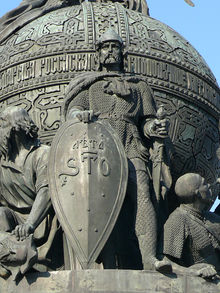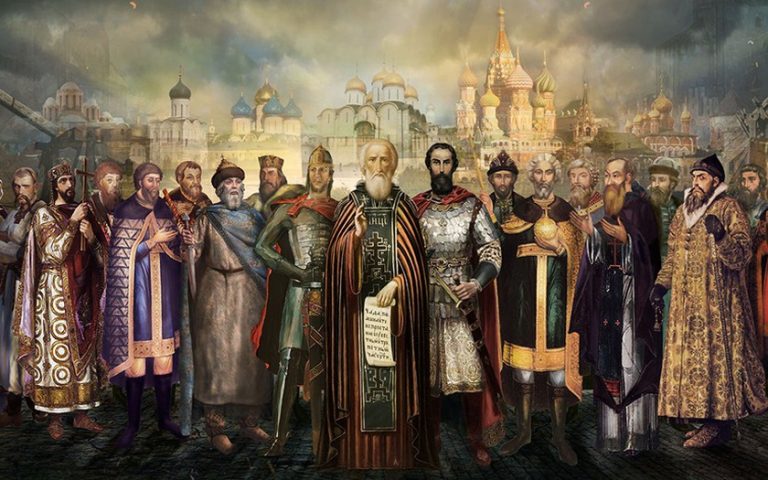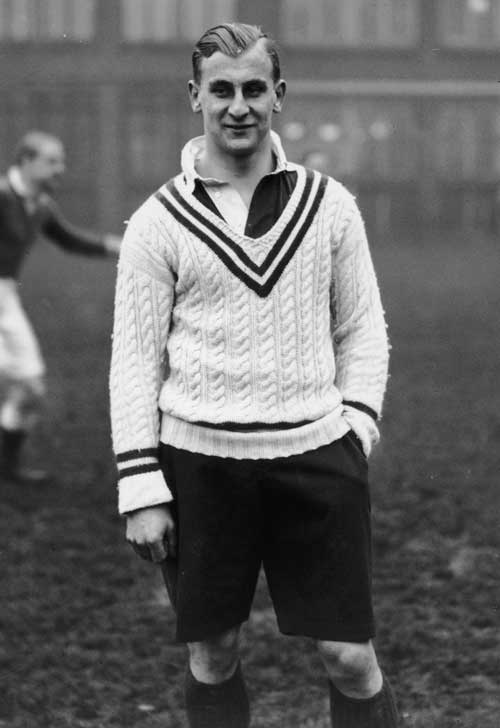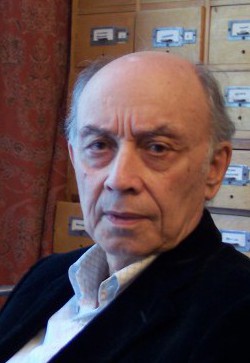Post by Admin on Aug 3, 2019 17:50:07 GMT
The Y-chromosome of DNA test of representatives of the Rurik dynasty
Male Y-chromosome DNA is not involved in gene recombination and is transmitted almost unchanged from father to son, so a group of scientists led by Polish researcher Andrzej Bayor and others conducted a study of the DNA Y-chromosome in about 25 people who consider themselves descendants of Rurik. Also in the list on the site were included people who had haplotypes close to Rurikovich. The overwhelming majority of these people have a common ancestor with them, all the same, significantly ahead of the time of Rurik's life, and for such people the designation “proto-Rurik” was invented. The complete list consisted of 191 people. The study was published on FamilyTreeDNA - the world's largest genetic database, which has registered DNA research of 293,266 people at the beginning of 2010. The first to be examined was Prince D. M. Shakhovskaya (professor of the Russian Orthodox Institute in Paris ). He had a subclade N1a1a-M178 of the haplogroup N1a1 (previously N3a, then N1c1), which is geographically Mongolian, linguistically Uralic.

Then AP Gagarin (professor from St. Petersburg), his cousin G. G. Gagarin, Prince N. D. Lobanov-Rostovsky from England, N. Rzhevsky from Smolensk, who also belonged to the haplogroup N1a1, were examined. They all belonged to the branch of the descendants of the Grand Duke Vladimir Monomakh. In total, out of 191 people surveyed, haplogroup N1 was detected in 130 people (68%), including descendants of Princes Trubetskoy (Canada), Putyatin (Russia), Kropotkin (Russia), Khilkov (Russia), Khovansky (Russia) and Golitsyna (Russia). Also, 114 people (60%) underwent an extended test for 67 markers, of which 15 standard matching markers were identified by Bayor, which he considers to be the Rurikovich haplotype (in addition to the SMGF standard for the presence of 9 matching markers for determining the haplogroup). Svyatopolk-Chetvertinsky has a haplogroup I2a1b2 (L621).
Haplogroup N1a1 is found in 60% of Finns in Finland and 40% of Balts (approximately the same among Estonians, Latvians, Lithuanians and East Germans). Approximately 16% of the inhabitants of the central regions of Russia have the Haplogroup N1a1 (see Slavs' gene pool), it is most common among the descendants of the Finno-Ugric tribes and is often found, along with R1a and I1, in the north of Russia, among the Yakuts and Chukchas. The theory that Rurik is a close relative of the Grand Duke of Lithuania, Gedimin, was not confirmed, although the surveyed descendants of Gedimin and belong to the same branch of the L550 haplogroup N (the common ancestor of the two of them lived no later than 2000 years ago).

Also during the study, the haplogroup R1a was discovered in some prince. Many of them belonged to the descendants of the Chernigov Prince Oleg Svyatoslavich (grandson of Yaroslav the Wise). For example, Prince Volkonsky, Prince Obolensky and Prince Baryatinsky turned out to be close relatives to each other on the Y-chromosome, which is not surprising, since they are considered descendants of Oleg Svyatoslavich, but all of them had the haplogroup R1a-L260. Thus, the modern corporation of Rurikids (recognized by the Russian Nobility Assembly as such) belongs to at least two different haplogroups: N1a1 (most of the branches originating from Monomakh) and R1a (Tarus branch, from Yuri Tarusa). There are at least 3 more recognized by the Russian Noble Assembly of Rurikids, belonging to other haplogroups that do not coincide with each other. Thus, if one can say about the two above mentioned branches that they originate at least from Vladimir Monomakh and Yuri Tarusa respectively, then it is impossible to say anything about “restless” haplotypes about when their ancestors began to consider themselves Rurikovich and why.
The fact that there are two different haplogroups among the alleged descendants of Rurik is explained by scientists in different ways. Thus, E. V. Pchelov drew attention to the general negligence of genetic research and its methodological inconsistency . He noted that only individual representatives of noble families who identified themselves as Rurikovich took part in the study, while in order to determine the origin (or belonging) of any kind to Rurikovich, it is completely insufficient to investigate the haplotype of only one of its representatives. It is necessary to conduct studies of descendants of different lines of the same genus, and only then can any conclusions be drawn. In addition, people with dubious pedigree took part in the study (for example, among those studied turned out to be a person who called himself an "extramarital descendant of Volkonsky") or people who have no connection with Rurik daughters. Thus, a person who identified himself as a princely Pozharsky family participated in the study, while this kind was stopped in the 17th century. At the same time, some researchers admit that the story of adultery is hidden somewhere. So, O. N. Barabanov with respect to the descendants of Vladimir Monomakh asserts the possibility of their origin from the Norwegian king Olav of Svyat as a result of the secret love of the latter with his wife Yaroslav the Wise - Ingegerd, which makes it possible to speak, as they point out, legends from the Scandinavian sagas and their analysis conducted by the Russian-German Scandinavian F. Brown (1924), and the Russian Scandinavian specialist T.N Jackson.

However, the credibility of the legends presented in the Scandinavian sagas is being questioned by Scandinavian historians such as E. A. Melnikova, GV Glazyrina and T. Jackson herself: according to them, the historical facts in the sagas have been strongly fictionalized - in the story of "secret love" too much from the European courtly literature common in the twelfth and thirteenth centuries, that is, at the time when the sagas were recorded, and the behavior of the heroes of the sagas is typical of such a plot. Also in this story noticeably typical for Scandinavian literature is the underlining of the superiority of the Scandinavians (Ingegerd and Olav) over the foreigner (Yaroslav). In addition, O. N. Barabanov considers the possibility of artificially constructing genealogies with respect to the descendants of Oleg Svyatoslavich of Chernigov, including both the carriers of N1c1 and R1a. In turn, the primordial haplogroup of Rurik, according to O.N. Barabanov, is - I2, which, as indicated by them with reference to such scientists as Yu. K. Kuzmenko and Spencer Well, is Scandinavian.
L. S. Klein, in turn, drew attention to the general legendaryness of the early genealogy of Rurikovich and the mythicity of their family ties, as set out in the Tale of Bygone Years. Thus, nothing definite can be said either about the forefather of the dynasty or about its first supposed descendants. According to him, DNA testing "rejected only the claims of some princes-descendants (with haplotype R1a) of true descent from Rurikids," what doubts were there anyway. Also, “she questioned the belonging of all Rurikids to a certain “proto-Norman” biological root ... but such a “proto-Norman” root is in general a fiction”. In addition, for most of the descendants of Rurik, with the haplogroup R1a, a common ancestor who lived at the appropriate time is not displayed. Only Volkonsky, Obolensky and Baryatinsky, whose ancestor lived about 800 years ago, that is, during the time of Yury of Tarusa, are related to each other. E. V. Pchelov explains the haplogroup of descendants of the Tarusian princes, different from the rest of the Rurikids, by the pedigree by the local dynasty of the Upper rulers to the offspring of Chernigov Prince Mikhail Vsevolodovich.
Male Y-chromosome DNA is not involved in gene recombination and is transmitted almost unchanged from father to son, so a group of scientists led by Polish researcher Andrzej Bayor and others conducted a study of the DNA Y-chromosome in about 25 people who consider themselves descendants of Rurik. Also in the list on the site were included people who had haplotypes close to Rurikovich. The overwhelming majority of these people have a common ancestor with them, all the same, significantly ahead of the time of Rurik's life, and for such people the designation “proto-Rurik” was invented. The complete list consisted of 191 people. The study was published on FamilyTreeDNA - the world's largest genetic database, which has registered DNA research of 293,266 people at the beginning of 2010. The first to be examined was Prince D. M. Shakhovskaya (professor of the Russian Orthodox Institute in Paris ). He had a subclade N1a1a-M178 of the haplogroup N1a1 (previously N3a, then N1c1), which is geographically Mongolian, linguistically Uralic.

Then AP Gagarin (professor from St. Petersburg), his cousin G. G. Gagarin, Prince N. D. Lobanov-Rostovsky from England, N. Rzhevsky from Smolensk, who also belonged to the haplogroup N1a1, were examined. They all belonged to the branch of the descendants of the Grand Duke Vladimir Monomakh. In total, out of 191 people surveyed, haplogroup N1 was detected in 130 people (68%), including descendants of Princes Trubetskoy (Canada), Putyatin (Russia), Kropotkin (Russia), Khilkov (Russia), Khovansky (Russia) and Golitsyna (Russia). Also, 114 people (60%) underwent an extended test for 67 markers, of which 15 standard matching markers were identified by Bayor, which he considers to be the Rurikovich haplotype (in addition to the SMGF standard for the presence of 9 matching markers for determining the haplogroup). Svyatopolk-Chetvertinsky has a haplogroup I2a1b2 (L621).
Haplogroup N1a1 is found in 60% of Finns in Finland and 40% of Balts (approximately the same among Estonians, Latvians, Lithuanians and East Germans). Approximately 16% of the inhabitants of the central regions of Russia have the Haplogroup N1a1 (see Slavs' gene pool), it is most common among the descendants of the Finno-Ugric tribes and is often found, along with R1a and I1, in the north of Russia, among the Yakuts and Chukchas. The theory that Rurik is a close relative of the Grand Duke of Lithuania, Gedimin, was not confirmed, although the surveyed descendants of Gedimin and belong to the same branch of the L550 haplogroup N (the common ancestor of the two of them lived no later than 2000 years ago).

Also during the study, the haplogroup R1a was discovered in some prince. Many of them belonged to the descendants of the Chernigov Prince Oleg Svyatoslavich (grandson of Yaroslav the Wise). For example, Prince Volkonsky, Prince Obolensky and Prince Baryatinsky turned out to be close relatives to each other on the Y-chromosome, which is not surprising, since they are considered descendants of Oleg Svyatoslavich, but all of them had the haplogroup R1a-L260. Thus, the modern corporation of Rurikids (recognized by the Russian Nobility Assembly as such) belongs to at least two different haplogroups: N1a1 (most of the branches originating from Monomakh) and R1a (Tarus branch, from Yuri Tarusa). There are at least 3 more recognized by the Russian Noble Assembly of Rurikids, belonging to other haplogroups that do not coincide with each other. Thus, if one can say about the two above mentioned branches that they originate at least from Vladimir Monomakh and Yuri Tarusa respectively, then it is impossible to say anything about “restless” haplotypes about when their ancestors began to consider themselves Rurikovich and why.
The fact that there are two different haplogroups among the alleged descendants of Rurik is explained by scientists in different ways. Thus, E. V. Pchelov drew attention to the general negligence of genetic research and its methodological inconsistency . He noted that only individual representatives of noble families who identified themselves as Rurikovich took part in the study, while in order to determine the origin (or belonging) of any kind to Rurikovich, it is completely insufficient to investigate the haplotype of only one of its representatives. It is necessary to conduct studies of descendants of different lines of the same genus, and only then can any conclusions be drawn. In addition, people with dubious pedigree took part in the study (for example, among those studied turned out to be a person who called himself an "extramarital descendant of Volkonsky") or people who have no connection with Rurik daughters. Thus, a person who identified himself as a princely Pozharsky family participated in the study, while this kind was stopped in the 17th century. At the same time, some researchers admit that the story of adultery is hidden somewhere. So, O. N. Barabanov with respect to the descendants of Vladimir Monomakh asserts the possibility of their origin from the Norwegian king Olav of Svyat as a result of the secret love of the latter with his wife Yaroslav the Wise - Ingegerd, which makes it possible to speak, as they point out, legends from the Scandinavian sagas and their analysis conducted by the Russian-German Scandinavian F. Brown (1924), and the Russian Scandinavian specialist T.N Jackson.

However, the credibility of the legends presented in the Scandinavian sagas is being questioned by Scandinavian historians such as E. A. Melnikova, GV Glazyrina and T. Jackson herself: according to them, the historical facts in the sagas have been strongly fictionalized - in the story of "secret love" too much from the European courtly literature common in the twelfth and thirteenth centuries, that is, at the time when the sagas were recorded, and the behavior of the heroes of the sagas is typical of such a plot. Also in this story noticeably typical for Scandinavian literature is the underlining of the superiority of the Scandinavians (Ingegerd and Olav) over the foreigner (Yaroslav). In addition, O. N. Barabanov considers the possibility of artificially constructing genealogies with respect to the descendants of Oleg Svyatoslavich of Chernigov, including both the carriers of N1c1 and R1a. In turn, the primordial haplogroup of Rurik, according to O.N. Barabanov, is - I2, which, as indicated by them with reference to such scientists as Yu. K. Kuzmenko and Spencer Well, is Scandinavian.
L. S. Klein, in turn, drew attention to the general legendaryness of the early genealogy of Rurikovich and the mythicity of their family ties, as set out in the Tale of Bygone Years. Thus, nothing definite can be said either about the forefather of the dynasty or about its first supposed descendants. According to him, DNA testing "rejected only the claims of some princes-descendants (with haplotype R1a) of true descent from Rurikids," what doubts were there anyway. Also, “she questioned the belonging of all Rurikids to a certain “proto-Norman” biological root ... but such a “proto-Norman” root is in general a fiction”. In addition, for most of the descendants of Rurik, with the haplogroup R1a, a common ancestor who lived at the appropriate time is not displayed. Only Volkonsky, Obolensky and Baryatinsky, whose ancestor lived about 800 years ago, that is, during the time of Yury of Tarusa, are related to each other. E. V. Pchelov explains the haplogroup of descendants of the Tarusian princes, different from the rest of the Rurikids, by the pedigree by the local dynasty of the Upper rulers to the offspring of Chernigov Prince Mikhail Vsevolodovich.







